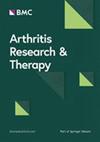早发难治性类风湿关节炎:数据驱动预测因子和时间阈值的建议
IF 4.6
2区 医学
Q1 Medicine
引用次数: 0
摘要
虽然近年来对难治性类风湿关节炎(D2TRA)的危险因素进行了研究,但没有研究确定早期和晚期D2TRA患者之间是否存在差异。本研究探讨是否可以按D2TRA发展时间对患者进行分类,并检查早期发病的危险因素。观察性研究涉及的D2TRA患者,其转换b/tsDMARD治疗的原因是无效(D2TRA- inneefficacy)。记录基线和首次b/tsDMARD开始后6个月的人口统计学数据、合并症和疾病特征、急性期反应物和疾病活动评分-28 (DAS28-ESR),以及每次治疗的持续时间。使用LASSO(最小绝对收缩和选择算子)cox回归特征选择策略,我们确定了影响d2tra无效时间的因素。采用DBSCAN聚类方法,根据到达D2TRA的时间确定子组。最后,我们将ROC和Precision-Recall曲线与Youden指数结合使用,以建立区分早期和晚期d2tra的截止点。131例D2TRA患者中,96例(72.7%)被归类为D2TRA无效。根据LASSO Cox-regression模型的收缩得分,遵循交叉验证误差最小化的标准,选择首次b/tsDMARD时是否存在焦虑抑郁综合征(ADS)、开始第一次b/tsDMARD后6个月的CRP和疾病诊断时的年龄。DBSCAN基于所选变量进行聚类,确定了三个聚类。这些分组根据D2TRA的时间进行区分,将患者分为早期和晚期D2TRA组。最后,使用约登指数确定44.5个月的最佳分界点来区分两组。在我们的队列中,定义d2tra无效的早期开发人员的截止时间为44.5个月。ADS诊断、首次b/tsDMARD后6个月CRP升高以及诊断时年龄较大是D2TRA早期发展的预测因素。本文章由计算机程序翻译,如有差异,请以英文原文为准。
Early-onset difficult-to-treat rheumatoid arthritis: proposal of data-driven predictors and temporal threshold
While risk factors for difficult-to-treat rheumatoid arthritis (D2TRA) have been studied in recent years, no studies have determined if there are differences between early and late developers of D2TRA. This study investigates whether patients can be classified by time to D2TRA development and examines risk factors for earlier onset. Observational study involving D2TRA patients whose reason for switching b/tsDMARD therapy was inefficacy (D2TRA-Inneficacy). Demographic data, comorbidities and disease characteristics, acute phase reactants and Disease Activity Score-28 [DAS28-ESR]) at baseline and 6 months after initiation of the first b/tsDMARD, and duration of each treatment were recorded. Using LASSO (Least Absolute Shrinkage and Selection Operator) Cox-regression feature-selection strategy, we identified those factors influencing the time to D2TRA-Inneficacy. DBSCAN clustering was conducted to identify subgroups based on time to D2TRA. Finally, we used ROC and Precision-Recall curves in tandem with the Youden index to establish a cutoff point for differentiating early and late-D2TRA. Of the 131 patients with D2TRA, 96 (72.7%) were classified as D2TRA-inefficacy. The variables presence of anxiety-depressive syndrome (ADS) at first b/tsDMARD, CRP at 6 months after starting the first b/tsDMARD and age at disease diagnosis were selected based on their contracted scores from the LASSO Cox-regression model, following the criterion of minimizing the cross-validated error. DBSCAN clustering based on selected variables identified three clusters. These clusters, differentiated by time to D2TRA, classified patients into early and late D2TRA groups. Finally, an optimal cut-off point of 44.5 months was determined using the Youden index to distinguish between the two groups. In our cohort, the cut-off time for defining early developers of D2TRA-inefficacy was 44.5 months. The presence of ADS diagnosis, a higher CRP 6 months after the first b/tsDMARD, and being older at diagnosis were predictors of early development of D2TRA.
求助全文
通过发布文献求助,成功后即可免费获取论文全文。
去求助
来源期刊

Arthritis Research & Therapy
RHEUMATOLOGY-
CiteScore
8.60
自引率
2.00%
发文量
261
审稿时长
14 weeks
期刊介绍:
Established in 1999, Arthritis Research and Therapy is an international, open access, peer-reviewed journal, publishing original articles in the area of musculoskeletal research and therapy as well as, reviews, commentaries and reports. A major focus of the journal is on the immunologic processes leading to inflammation, damage and repair as they relate to autoimmune rheumatic and musculoskeletal conditions, and which inform the translation of this knowledge into advances in clinical care. Original basic, translational and clinical research is considered for publication along with results of early and late phase therapeutic trials, especially as they pertain to the underpinning science that informs clinical observations in interventional studies.
 求助内容:
求助内容: 应助结果提醒方式:
应助结果提醒方式:


